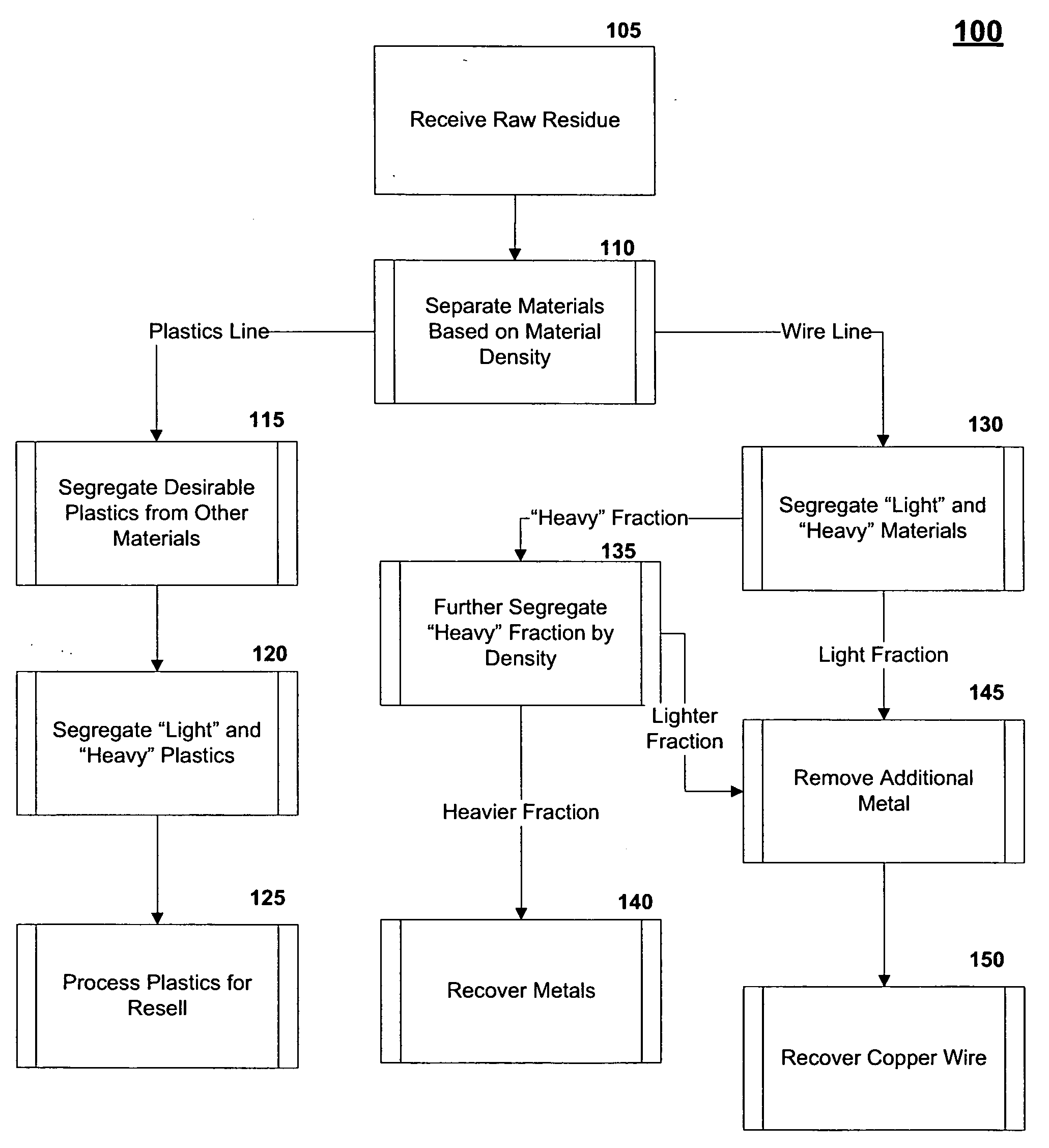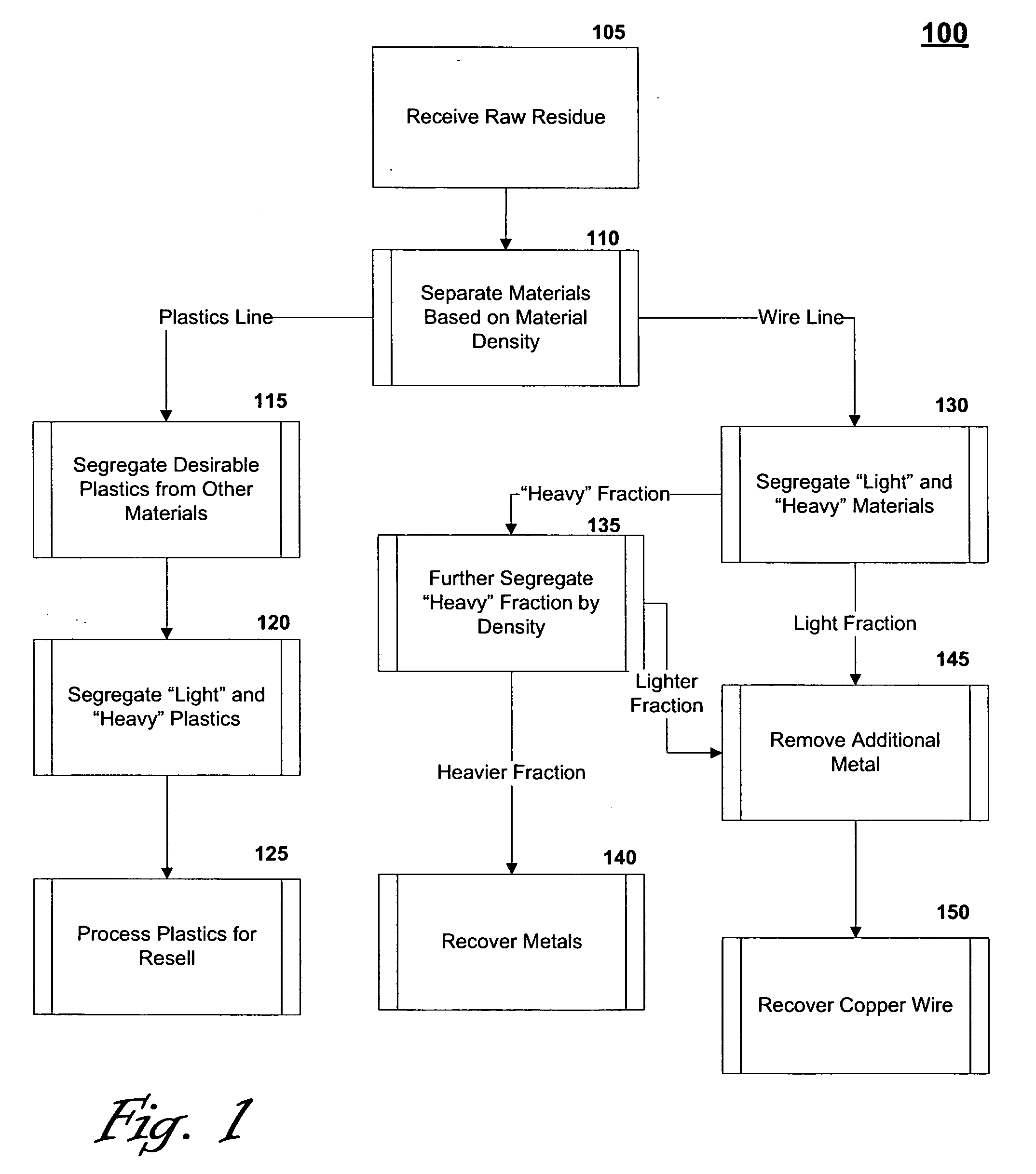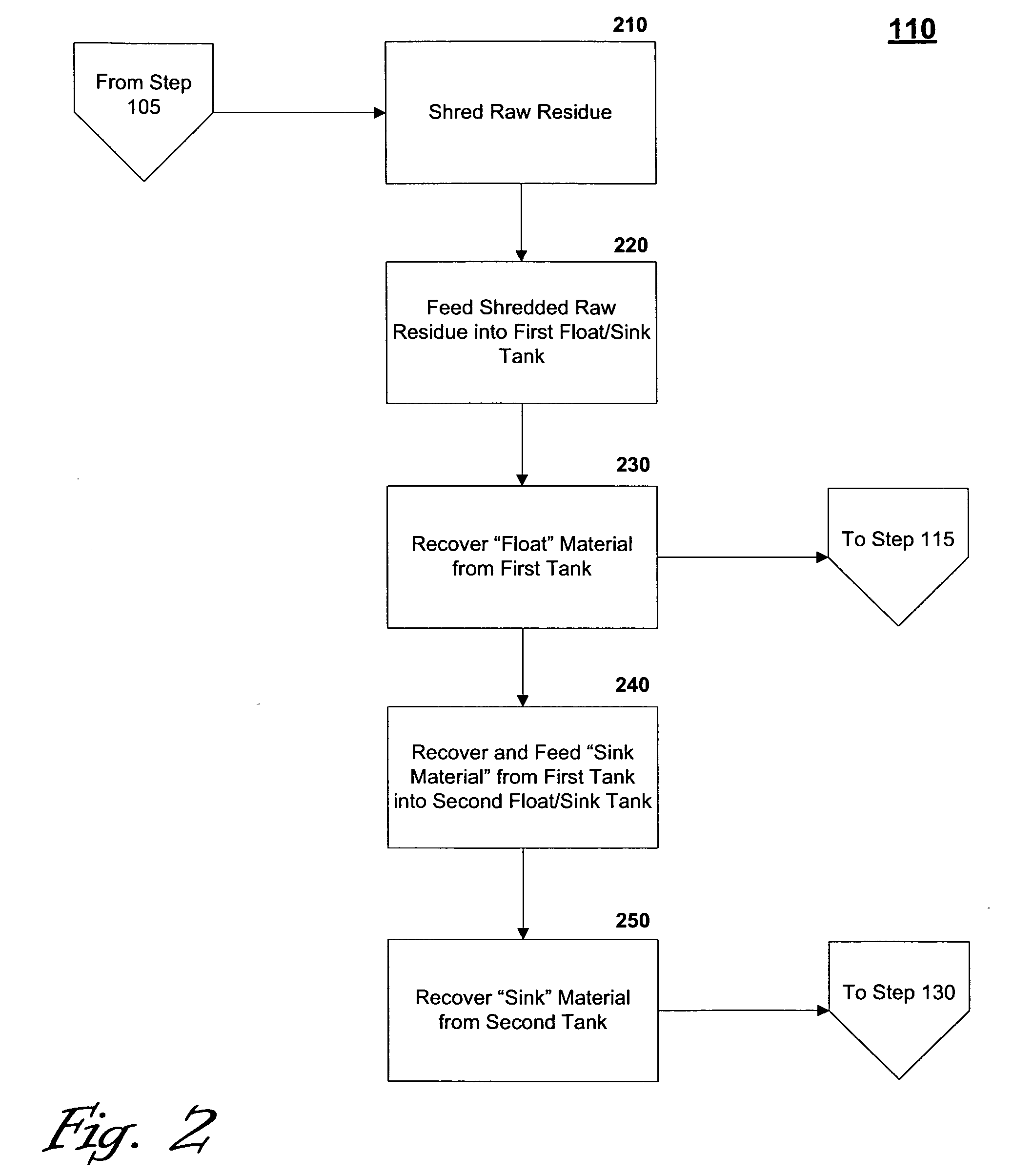Method and system for sorting and processing recycled materials
a technology of recycled materials and waste materials, applied in the field of recycling materials, can solve the problems of inability to effectively sort waste materials containing diverse materials, and inability to meet the needs of the environment, so as to reduce the size of waste materials
- Summary
- Abstract
- Description
- Claims
- Application Information
AI Technical Summary
Benefits of technology
Problems solved by technology
Method used
Image
Examples
Embodiment Construction
[0030]Exemplary embodiments of the present invention provide systems and methods for recovering materials such as plastics and non-ferrous metals. Aspects of the invention employ density separation to separate plastic-bearing materials from copper-bearing materials. Plastic-bearing materials are further separated to separate light plastics from heavy plastics. Plastics are concentrated, extruded, and palletized. Copper and other valuable metals are recovered from copper-bearing materials using a water separation table.
[0031]FIG. 1 depicts an overall process flow 100 for recovering plastics and non-ferrous metals in accordance with an exemplary embodiment of the present invention. Referring to FIG. 1, the process 100 begins at step 105 by receiving raw residue. This residue may result from prior processing of waste material, such as ASR and WSR. Typically, this raw residue is a waste product from this primary recycle and recovery effort. The exemplary process 100 provides a process t...
PUM
| Property | Measurement | Unit |
|---|---|---|
| Size | aaaaa | aaaaa |
| Weight | aaaaa | aaaaa |
| Fraction | aaaaa | aaaaa |
Abstract
Description
Claims
Application Information
 Login to View More
Login to View More - R&D
- Intellectual Property
- Life Sciences
- Materials
- Tech Scout
- Unparalleled Data Quality
- Higher Quality Content
- 60% Fewer Hallucinations
Browse by: Latest US Patents, China's latest patents, Technical Efficacy Thesaurus, Application Domain, Technology Topic, Popular Technical Reports.
© 2025 PatSnap. All rights reserved.Legal|Privacy policy|Modern Slavery Act Transparency Statement|Sitemap|About US| Contact US: help@patsnap.com



